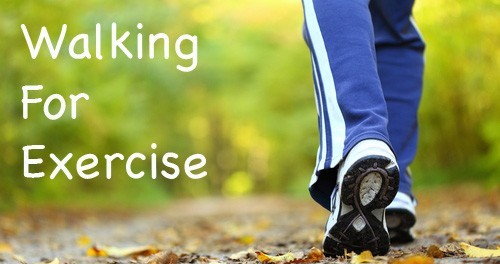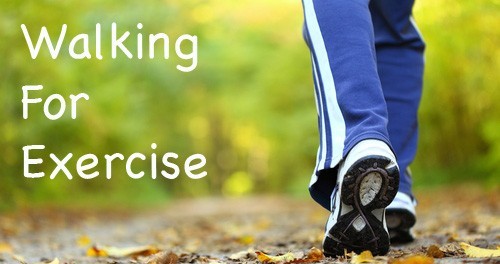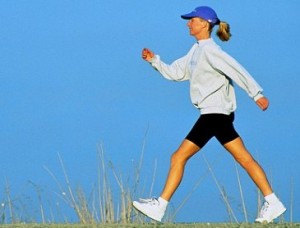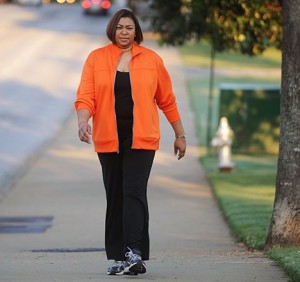Walk Talk Series
When Walking Isn’t Working
The Need for Speed
Do you long to learn to walk faster, to pass the crowd and win a race? Or are you content to just go the distance at your own pace?
- 35-70 minute walk in the fat-burning zone at 60-70% of your maximum heart rate
- Warm up with 5 minutes at a very easy pace
- Find a safe spot with a wall or pole to do a 5 minute easy stretching routine
- Now resume your walk at a comfortable pace
- End with 5 minutes of gentle stretching.
Advanced walkers: Same
Exercise:Upper Body exercise
Walking has always been highly recommended by doctors as a great form of exercise. But what the medical profession and even some trainers have collectively have failed to do, is explain just how to walk. The directive of “Walk 30 minutes a day,” is too abstract.
Are You House-Walking rather than Fitness Walking?
Observe walkers on a popular outdoor path. Many peoples’ idea of a “fitness walk” is that of strolling, while absorbed in heavy conversation. This does little to generate fitness results or trigger weight loss beyond the first 5 or 10 pounds.
This is “house-walking,” the speed people walk when going from one room in the house to the other. They simply duplicate this and prolong it outdoors, hoping it will knock off 50 pounds, or make their legs mini-skirt-ready, or clean out their clogged arteries.
Know Your Baseline
Your body transforms only when it detects a change in its normal routine. Your baseline is that level of physical activity that your body is highly accustomed to. It includes the speed at which you normally walk in everyday life. If you go this same pace on your designated fitness walks—even for 60 minutes—your body isn’t going to detect much of a change.
You must perform above your baseline in order to ignite substantial changes in your body. Whatever your normal walking pace is in life, if you’re doing this around that giant lake path, expect only minor changes and a soon-hit plateau.
Increase Intensity to Burn Stubborn Fat
The body that’s used to house-walking is in for a real shock when it is suddenly moved at 4.2 mph! This will force your body’s systems to jump into the trenches to carry out this unexpected task.
Carrying out this new challenge requires energy. Your body will dip into stored fat for this energy! You must exercise well-above your baseline to sheer off stubborn fat, or acquire higher resistance to heart disease and cancer.
Exercise Intensity Is Relative
If you are new to exercise walking, don’t scorch yourself on the first day of training by attempting 4.2 mph. You must build a fitness base first. And once you get this, you must always keep pushing yourself. Remember, you’ve been walking since diaper days. Your body is so familiar with walking, that you must make it truly challenging for results.
Know Your Starting Point: Everybody has a starting point: that which requires effort and an increased rate of breathing. For apparently healthy people of all ages, the starting point should be whatever it takes to achieve 60-85 percent target heart rate. If walking slowly for 30 minutes wipes you out, then this is your starting point. But commit yourself to going a little faster each time.
Pay Attention to How you Feel: how hard you’re breathing, and whether or not conversation comes easily. Find the pace that prevents you from carrying on conversation while still able to speak in short sentences, and then build up from there.
Know When You Can Add Intensity: As long as you’re able to speak freely to your walking partner or into your cell phone, you can certainly add some intensity, regardless of your weight, age or athletic background. When a person, despite excess weight or advanced age, looks comfortable while walking, and especially if she or he is talking freely, this indicates they can walk a heck of a lot faster (unless they have painful knee joints, foot pain or painful leg vascular disease).
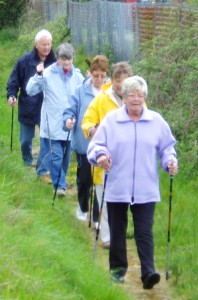 Get Out of Your Comfort Zone
Get Out of Your Comfort Zone
In general, house-walkers are not hampered by pain; they’re hampered by believing that “Anything is better than nothing.”
This reasoning is flawed. There’s no such thing as “nothing.” Get out of your comfort zone! Hardcore effort, not house-walking, will improve your red blood cells’ ability to extract oxygen molecules from hemoglobin and transport them to working muscles. Do not settle. Expect more from the time you put into walking.
Beyond the Honeymoon
Of course you’ll experience changes during the so-called honeymoon phase of your new walking program if you’ve previously been very inactive. Coupled with a sudden commitment to dieting, a 30-minute daily house-walk will produce some weight loss and maybe heightened liveliness. But you’ll soon plateau and wonder, what’s the point? The honeymoon phase is brief. Always aim for higher levels.
Add High Intensity Intervals to Build Fitness
The training effect of only 15 minutes of high intensity interval training is substantial. For example, speed-walk up a short grassy hill, then slowly come down. Repeat, without rest, until 15 minutes is up. And how does one do this without rest? By slowing down, even if you’re crawling up the hill. As long as you’re fighting for it. Weight loss isn’t handed to you on a silver platter. You must fight for it.
Higher Intensity Walking on the Flat
On a flat course, see how fast you must walk before you get so winded you cannot talk. When you reach this point, slow down for a minute or two, then go at it again. Conduct these intervals for 30 minutes, going all-out on the speed-walks. Really swing your arms. Gone will be the comfort of house-walks. But watch the weight come off.

